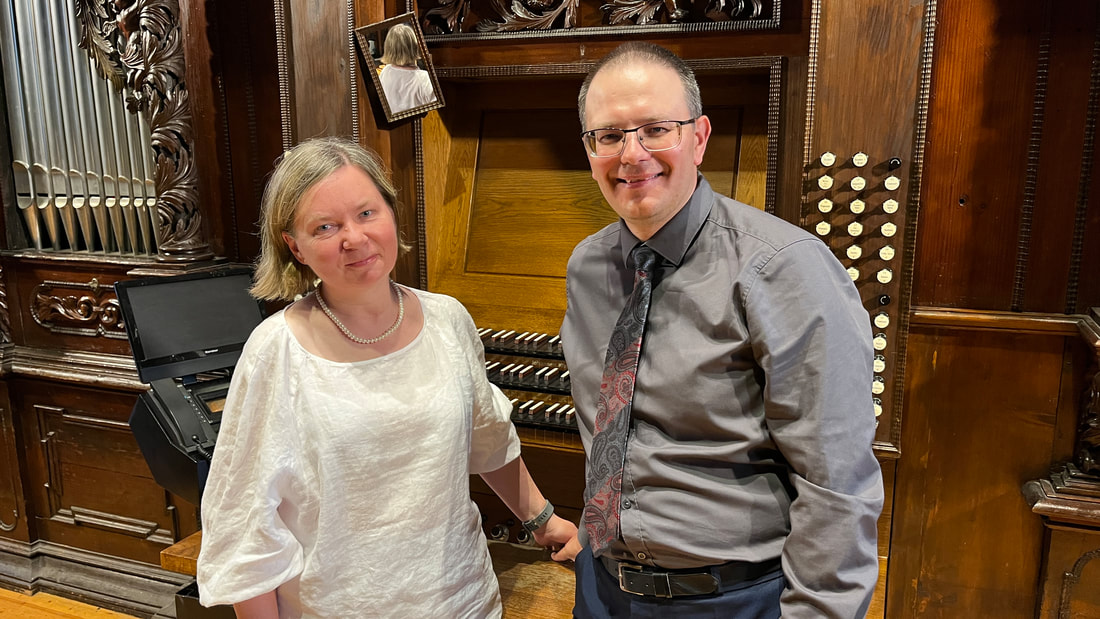HOW TO MASTER ANY ORGAN PIECE
FREE 10 DAY ORGAN PLAYING MINI COURSE
Then continue to the Blog.
"The sight-reading course has helped me tremendously. Thank you very much for your essays, courses and all your help." (Hugh)
"I found the fingerings, registration ideas, and general comments to be excellent" (Robert)
"I have found your download very helpful! It was really excellent! I have watched some of your teaching videos, and when I read your instructions, I try to imagine you are there teaching me! You may feel disappointed that I am ~2-3 days behind, but I am a slow learner, and I have committed to taking the time to get it right as you say. But the other night my wife commented that she had never heard me play such a detailed melody in the left hand so well! (my left hand is generally poor!)" (John)
"Dear Vidas. I just got through learning your practice score of Benedicamus from Tabulatura Nova, by Scheidt. I used your practice schedule and it is an excellent approch to learning any composition. I like all the performance practice information you include in this score. Best wishes." (Frank)
"It has been a great pleasure in my life of having discovered your courses and material as well as the YouTube work of recordings. You have a calm and pleasant way of teaching." (Robert)
"I have just learned that I passed the CAGO exam, and am now a Colleague of the American Guild of Organists! I have had excellent coaches, lessons, and mentoring here in the United States and an outstanding teacher, but I also want to thank you for your assistance in answering my questions and in providing some excellent practice exercises and video explanations which reinforced my U.S. training! I want to continue to improve my skills and will be participating in your courses and exercises and following your video demonstrations." (Judith)
"The sight-reading course has helped me tremendously. Thank you very much for your essays, courses and all your help." (Hugh)
"I found the fingerings, registration ideas, and general comments to be excellent" (Robert)
"I have found your download very helpful! It was really excellent! I have watched some of your teaching videos, and when I read your instructions, I try to imagine you are there teaching me! You may feel disappointed that I am ~2-3 days behind, but I am a slow learner, and I have committed to taking the time to get it right as you say. But the other night my wife commented that she had never heard me play such a detailed melody in the left hand so well! (my left hand is generally poor!)" (John)
"Dear Vidas. I just got through learning your practice score of Benedicamus from Tabulatura Nova, by Scheidt. I used your practice schedule and it is an excellent approch to learning any composition. I like all the performance practice information you include in this score. Best wishes." (Frank)
"It has been a great pleasure in my life of having discovered your courses and material as well as the YouTube work of recordings. You have a calm and pleasant way of teaching." (Robert)
"I have just learned that I passed the CAGO exam, and am now a Colleague of the American Guild of Organists! I have had excellent coaches, lessons, and mentoring here in the United States and an outstanding teacher, but I also want to thank you for your assistance in answering my questions and in providing some excellent practice exercises and video explanations which reinforced my U.S. training! I want to continue to improve my skills and will be participating in your courses and exercises and following your video demonstrations." (Judith)
We respect your privacy. Unsubscribe at any time.

